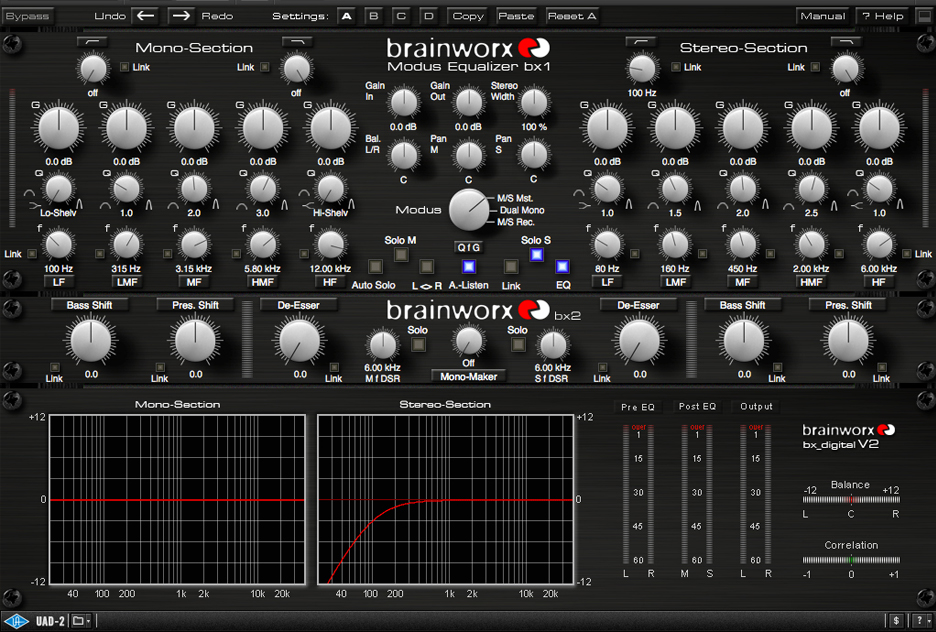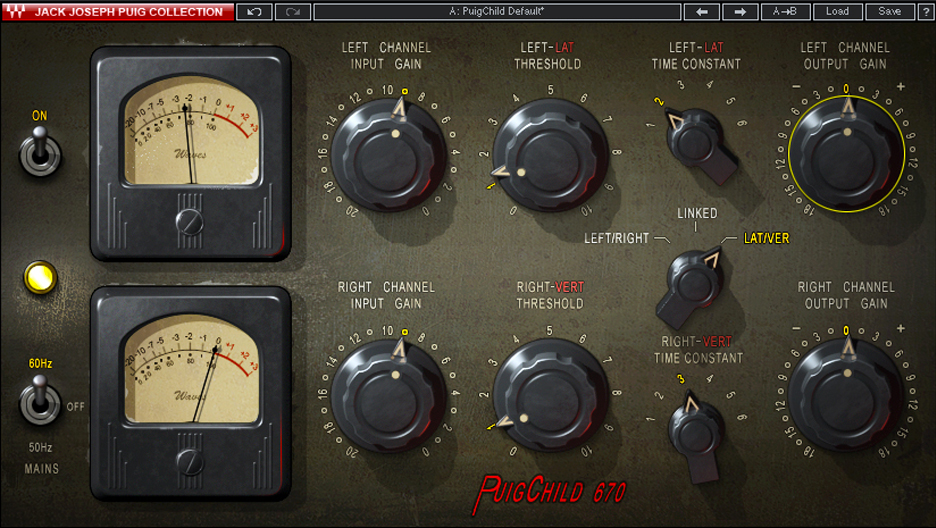Mid-Side or M/S processing is derived from a classic stereo microphone technique referred to as “mid-side recording.” Although the two are directly related conceptually, they are not the same thing. In both cases, however, M/S refers to positions within the 180° stereo field, with the “mid” part being the center and the “side” part being the left and right sides. Rather than delving into the technical aspects of M/S processing in this primer, I’ll simply provide a few examples of how it may be applied.
M/S processing may be done to any stereo sound (try it on a guitar or drum sub-mix), though it is primarily used on entire mixes. A stereo band mix will nearly always have some information in the center (kick drum, bass guitar, and the lead vocal are typical), and other information to the left or right of center, including on one side only. Isolating these two components of the mix enables you to both process them individually and to change their relationship to each other.
An obvious example of this would be making all of the information in the center of the mix louder or quieter than the information on the sides, enabling you not only to tweak their relative levels, but also to affect the overall width of the stereo image itself. Of course, there are also many other possibilities.
RELATED VIDEO
Low Focus
One reason why low-frequency sounds such as kick drum and bass guitar are usually panned to the center are that low-frequencies are less directional than higher frequencies and therefore more difficult for our ears to “place” in the stereo space anyway. Therefore, it can be desirable to use a high-pass filter to greatly reduce or eliminate all the frequencies below, say, 100Hz on the side channels, reinforcing the focus and solidity of the low-frequency sounds in the center. For example, the UAD brainworx bx_digital V2 EQ plugin shown in Ex. 1 has been configured in this way.

The UAD brainworx bx_digital V2 is a mastering-quality EQ plugin with extensive M/S equalization capabilities, including individual Solo buttons for both the Mono (mid) and Stereo (side) sections. Here, a high-pass filter in the Stereo section is removing frequencies below 100Hz, and that section’s Solo button is engaged.
Similarly, rather than compressing all the frequencies of a stereo mix in the same way, with the low frequencies mostly driving the compression, you might want to apply separate amounts of compression to the mid and sides. In Ex. 2, a Waves PuigChild 670 has been switched to “Lat/Vert” (Lateral/Vertical) operation, which is the equivalent of M/S, assigning the upper section to mid and the lower section to side. A more aggressive level of compression has been dialed in to hold the mid/lower frequencies firmly in place, while the side/higher frequencies are being compressed more subtly. Also, note that the Left and Right Output controls (assigned to mid and side in Lat/Vert mode) may not only be used to adjust the relative levels, but also as de facto solo buttons, by reducing one or the other channel’s output to 0.

The Waves PuigChild 670 is an emulation of the legendary Fairchild 670 compressor/limiter.
Image Matters
Remember that adjusting the relative levels of the mid and side signals changes the perceived stereo width of the overall image, and that includes the stereo reverbs, delays, and other effects that are part of the side information. Any or all of those aspects of the image may be thrown out of whack when playing with the balance, due to phase and other problems—so it is always a good idea to begin with a light touch.
Alternatively, there are numerous plugins available that utilize M/S processing to affect various aspects of the stereo image with minimal risk of remorse. They include the Universal Audio K-Stereo, air Stereo Width, Mathew Lane DrMS, and Waves Center and S1 Imager plugins. If you don't have any plugins capable of M/S matrixing, there's also the handy HOFA 4U Meter plugin which (among other things) can take encode and decode mid-side so that you can use your standard multi-mono plugins to process the center and side channels separately.

The Universal Audio UAD K-Stereo plugin, designed in collaboration with renowned mastering engineer Bob Katz.
Approaches to M/S processing can get considerably more complex and sophisticated (I haven’t even mentioned the relative ease of collapsing the image to mono, or M/S encoding/decoding techniques involving signal routing, conversion plugins, and other options), but hopefully I’ve supplied the impetus for you to, um, widen your knowledge further.
This column addresses topics of interest to recordists, ranging from remedial tutorials on essential terms and concepts to more advanced examples of studio geekery. Next up in On Tracks: Stem Mixing
Software & PluginsAbout the Author:
Barry Cleveland is a San Francisco Bay Area-based journalist, author, guitarist, and composer. He was an editor at Guitar Player magazine for 12 years and at Mix and Electronic Musician magazines before that. His book, Joe Meek's Bold Techniques is a cult classic, and he also contributed to Whole Lotta Led Zeppelin. He has released five albums, as well as composing music for film, television, and video games.


